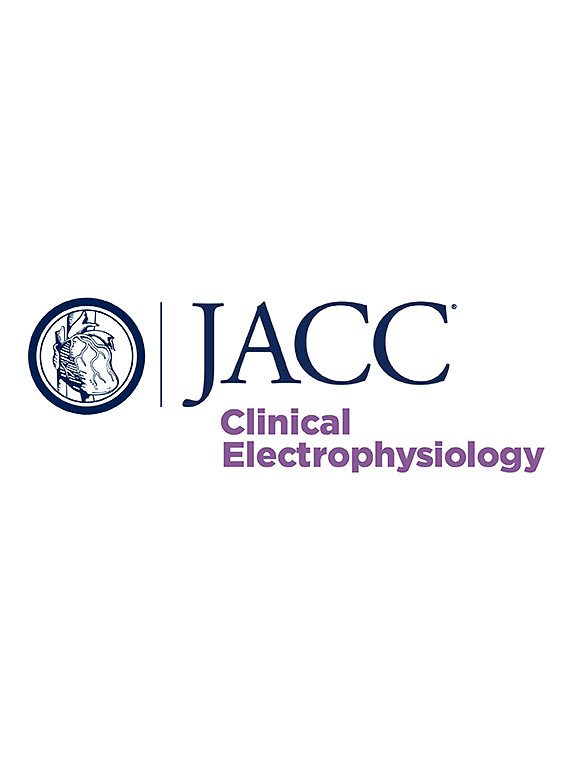Enhanced Ca2+-Driven Arrhythmogenic Events in Female Patients With Atrial Fibrillation
IF 8
1区 医学
Q1 CARDIAC & CARDIOVASCULAR SYSTEMS
引用次数: 0
Abstract
Background
Substantial sex-based differences have been reported in atrial fibrillation (AF), but the underlying mechanisms are poorly understood.
Objectives
This study sought to gain a mechanistic understanding of Ca2+-handling disturbances and Ca2+-driven arrhythmogenic events in male vs female atrial cardiomyocytes and establish their responses to Ca2+-targeted interventions.
Methods
We integrated reported sex differences and AF-associated changes (ie, expression and phosphorylation of Ca2+-handling proteins, cardiomyocyte ultrastructural characteristics, and dimensions) into our human atrial cardiomyocyte model that couples electrophysiology with spatially detailed Ca2+-handling processes. Sex-specific responses of atrial cardiomyocytes to arrhythmia-provoking protocols and Ca2+-targeted interventions were evaluated.
Results
Simulated quiescent cardiomyocytes showed increased incidence of Ca2+ sparks in female vs male myocytes in AF, in agreement with previous experimental reports. Additionally, our female model exhibited elevated propensity to develop pacing-induced spontaneous Ca2+ releases (SCRs) and augmented beat-to-beat variability in action potential (AP)-elicited Ca2+ transients compared with the male model. Sensitivity analysis uncovered distinct arrhythmogenic contributions of each component involved in sex and/or AF alterations. Specifically, increased ryanodine receptor phosphorylation emerged as the major SCR contributor in female AF cardiomyocytes, whereas reduced L-type Ca2+ current was protective against SCRs for male AF cardiomyocytes. Furthermore, simulated Ca2+-targeted interventions identified potential strategies (eg, t-tubule restoration, and inhibition of ryanodine receptor and sarcoplasmic/endoplasmic reticulum Ca2⁺-ATPase) to attenuate Ca2+-driven arrhythmogenic events in women, and revealed enhanced efficacy when applied in combination.
Conclusions
Sex-specific modeling uncovers increased Ca2+-driven arrhythmogenic events in female vs male atria in AF, and suggests combined Ca2+-targeted interventions are promising therapeutic approaches in women.
女性心房颤动患者 Ca2+ 驱动的致心律失常事件增强:计算建模的启示
背景:据报道,心房颤动(AF)存在很大的性别差异,但对其潜在机制却知之甚少:本研究旨在从机制上了解男性与女性心房心肌细胞的 Ca2+ 处理紊乱和 Ca2+ 驱动的致心律失常事件,并确定它们对 Ca2+ 靶向干预的反应:我们将已报道的性别差异和房颤相关变化(即 Ca2+ 处理蛋白的表达和磷酸化、心肌细胞超微结构特征和尺寸)整合到我们的人类心房心肌细胞模型中,该模型将电生理学与详细的空间 Ca2+ 处理过程结合在一起。评估了心房心肌细胞对心律失常诱发方案和Ca2+靶向干预的性别特异性反应:结果:模拟静息心肌细胞显示,房颤时女性心肌细胞与男性心肌细胞相比,Ca2+火花发生率增加,这与之前的实验报告一致。此外,与男性模型相比,我们的女性模型表现出更高的起搏诱导的自发 Ca2+ 释放(SCR)倾向,以及动作电位(AP)诱导的 Ca2+ 瞬时的节拍间变异性增加。敏感性分析揭示了性别和/或房颤改变所涉及的每个成分的不同致心律失常作用。具体来说,在女性房颤心肌细胞中,里约丁受体磷酸化的增加是导致 SCR 的主要因素,而 L 型 Ca2+ 电流的减少则对男性房颤心肌细胞的 SCR 起保护作用。此外,模拟的Ca2+靶向干预发现了潜在的策略(如t-微管恢复、抑制雷诺丁受体和肌浆/内质网Ca2⁺-ATP酶),可减轻女性Ca2+驱动的致心律失常事件,当联合应用时,效果更佳:结论:性别特异性模型揭示了房颤中女性与男性心房中Ca2+驱动的致心律失常事件的增加,并表明针对女性的Ca2+联合干预是很有前景的治疗方法。
本文章由计算机程序翻译,如有差异,请以英文原文为准。
求助全文
约1分钟内获得全文
求助全文
来源期刊

JACC. Clinical electrophysiology
CARDIAC & CARDIOVASCULAR SYSTEMS-
CiteScore
10.30
自引率
5.70%
发文量
250
期刊介绍:
JACC: Clinical Electrophysiology is one of a family of specialist journals launched by the renowned Journal of the American College of Cardiology (JACC). It encompasses all aspects of the epidemiology, pathogenesis, diagnosis and treatment of cardiac arrhythmias. Submissions of original research and state-of-the-art reviews from cardiology, cardiovascular surgery, neurology, outcomes research, and related fields are encouraged. Experimental and preclinical work that directly relates to diagnostic or therapeutic interventions are also encouraged. In general, case reports will not be considered for publication.
 求助内容:
求助内容: 应助结果提醒方式:
应助结果提醒方式:


